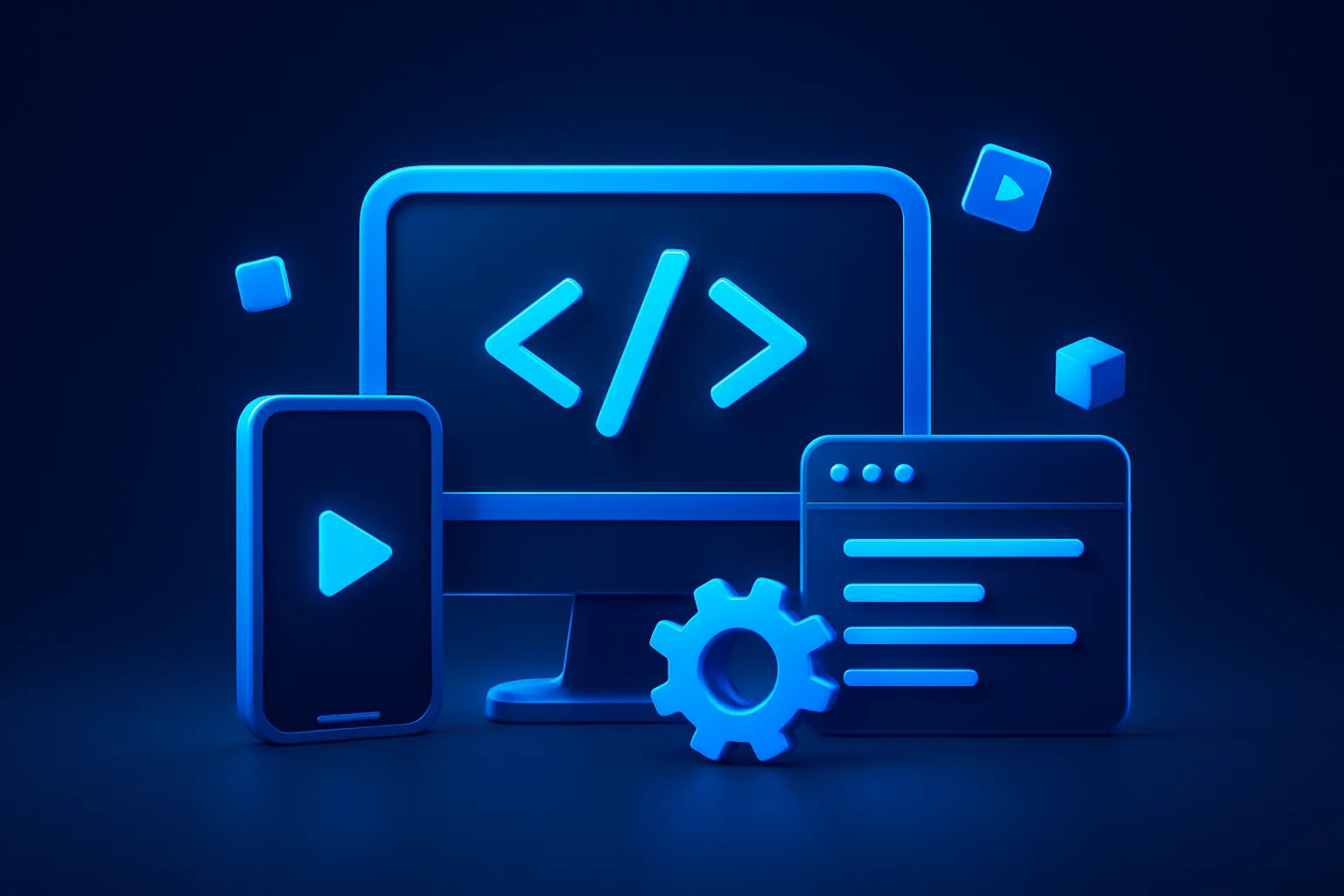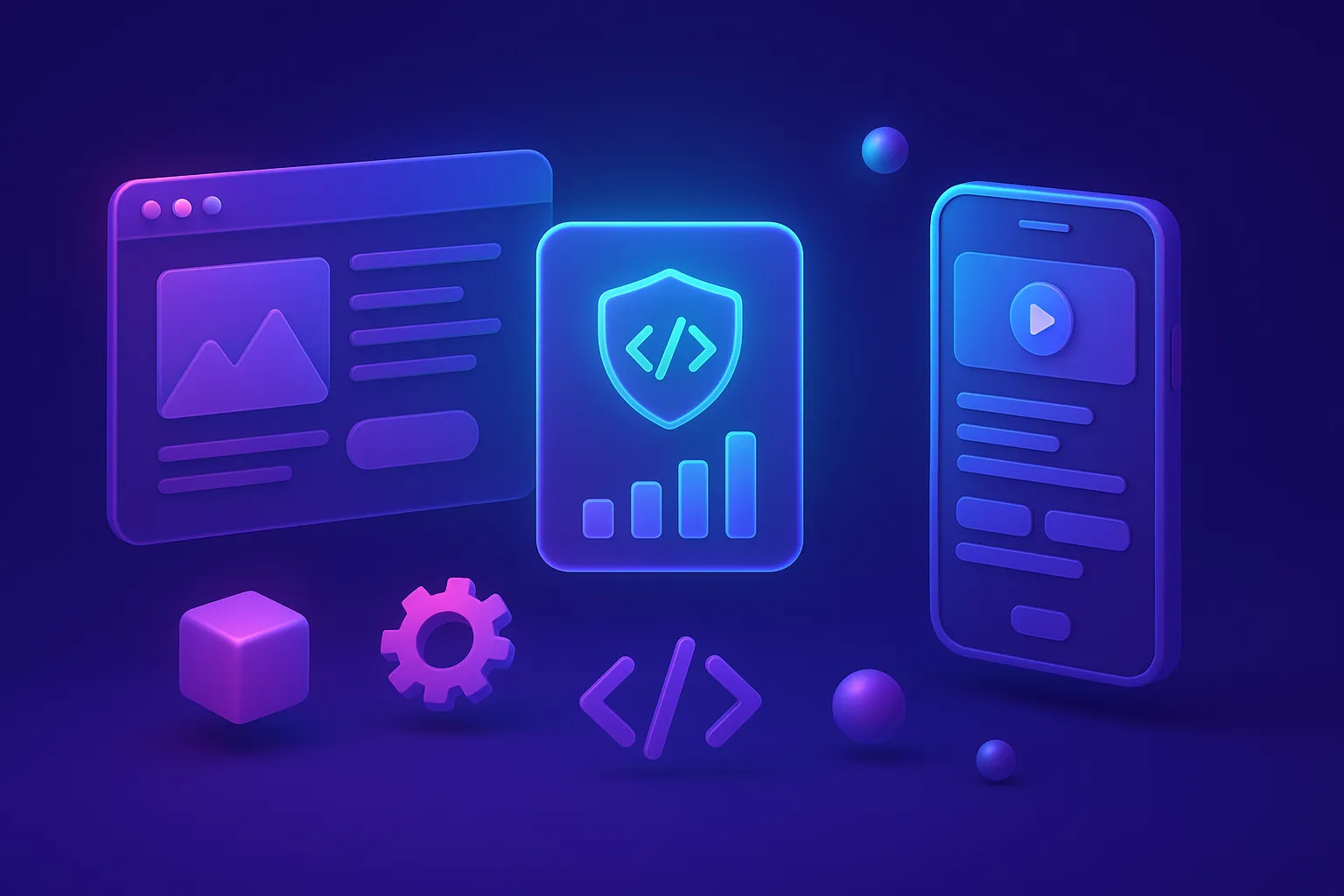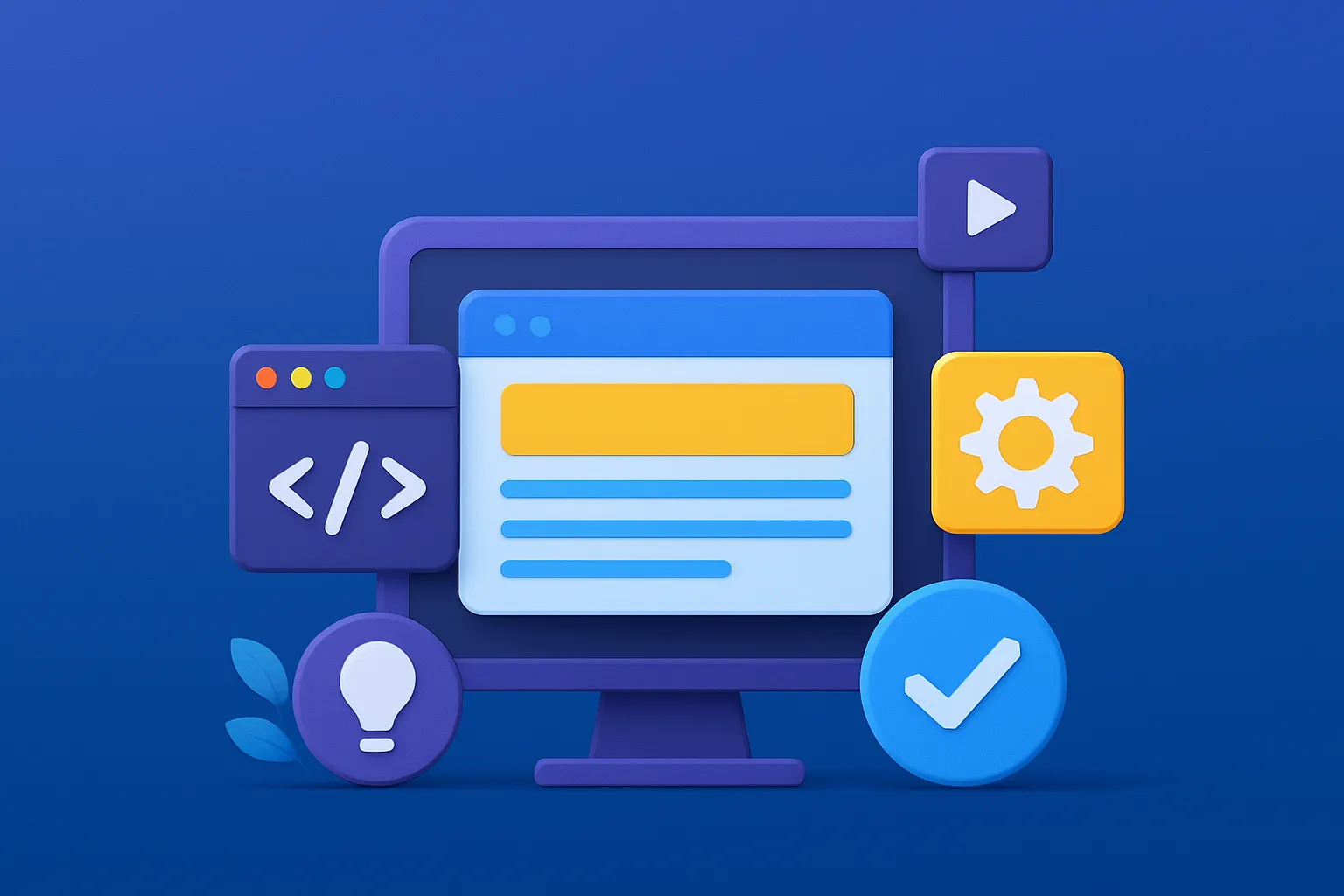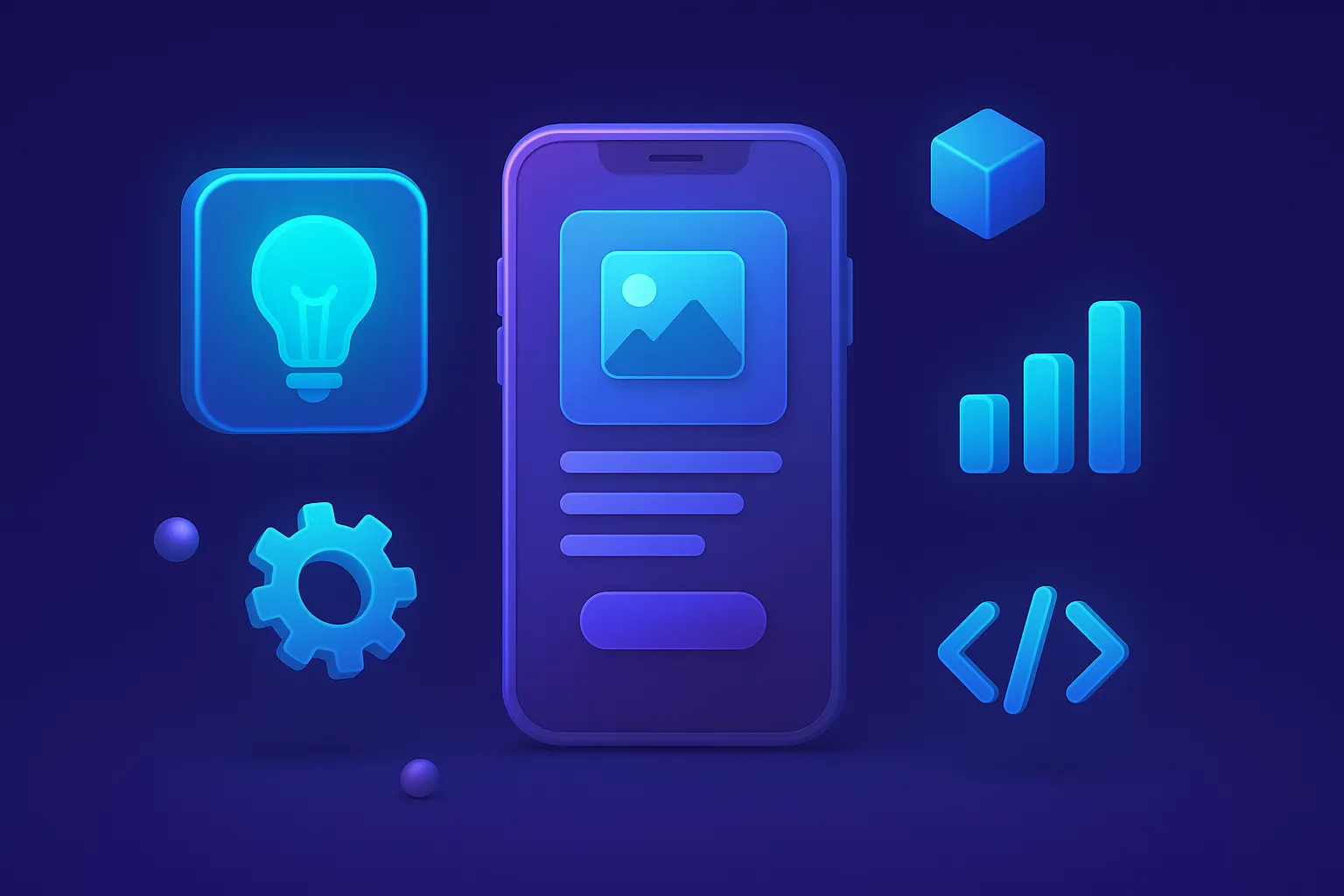October 18, 2025
October 18, 2025

Every developer knows that coding tutorials can only take you so far. The real magic happens when you roll up your sleeves and build something tangible: an app, a website, a tool people can actually use. Whether you’re a beginner looking to practice the basics or an experienced programmer eager to sharpen your edge, the right project can turn abstract concepts into practical skills. In this article, we’ll explore 12 creative yet practical project ideas for web and mobile developers that will not only boost your confidence but also make your portfolio stand out.
Not all projects are created equal. While any coding exercise can help you practice, a truly outstanding project is the one that makes recruiters, clients, or even fellow developers stop and take notice. So, what separates a basic “to-do list” clone from a project that feels professional and impactful? Here are the key qualities:
1. Solves a Real Problem
A great developer project addresses a genuine need. It doesn’t have to be revolutionary, something as simple as an app that helps users organize their daily tasks more efficiently can be valuable. The point is to design with purpose, not just replicate tutorials.
2. Clean, Maintainable Code
Behind every polished project lies well-structured code. Using best practices like modular design, meaningful variable names, and proper documentation shows that you don’t just code for yourself, you build for scalability and collaboration.

3. Strong User Experience (UI/UX)
First impressions matter. A project with an intuitive interface, smooth navigation, and responsive design feels more “real” than one with clunky layouts. Even if the idea is simple, good UX makes your work memorable.
4. Incorporates Modern Technologies
Employers and peers want to see that you can adapt to current industry trends. Whether it’s integrating APIs, experimenting with AI features, or deploying your app to the cloud, adding modern tech gives your project extra weight.
5. Showcases Your Creativity
Finally, uniqueness goes a long way. Instead of building yet another generic weather app, why not add features like location-based tips or daily outfit suggestions? Small creative touches can make your project stand out from the sea of similar ideas.
In short, a standout developer project balances functionality, code quality, user experience, modern tools, and creativity. With these elements in place, your project isn’t just practice, it’s proof of your potential as a professional developer.
Building web projects is one of the most effective ways to sharpen your coding skills and demonstrate real-world problem-solving ability. Instead of following endless tutorials, creating actual applications gives you both technical depth and something tangible to showcase in your portfolio.
Below are six practical web development project ideas that range from beginner-friendly to more advanced, each designed to challenge you in a different way.

Think of your portfolio as your digital handshake. Long before an interview, recruiters or clients often check your online presence. A custom-built portfolio site tells them not only what you’ve done but also how you think as a developer. Unlike cookie-cutter templates, your own code lets you highlight your unique style.
Tip: Treat it like an ongoing project. Update it with every new skill or achievement so it grows with your career.
Behind every blog post is a system that organizes, secures, and serves content. Building your own CMS is like peeking under the hood of WordPress or Ghost. This project moves you from simply “writing code” to designing systems.
Imagine this roadmap:
To level up, make it a headless CMS: the backend serves JSON or GraphQL, and your frontend (React, Vue, or even a mobile app) consumes it. This gives you a taste of modern decoupled architecture.
If one project tests the full stack, it’s e-commerce. At its simplest, it’s product listings and a cart. At its hardest, it’s about scaling, security, and user trust.
Instead of listing features, think of the real-world problems:
By tackling these, you’ll touch almost every corner of web dev: databases, APIs, authentication, caching, responsive design, and deployment. Bonus: you can integrate Stripe or PayPal to simulate real payments, a huge confidence boost when demoing to potential employers.
Messaging apps are part of daily life, and creating one gives you hands-on practice with real-time communication. Instead of static page loads, you’ll dive into WebSockets or Socket.IO to keep data flowing instantly.
Core features to explore:
For an advanced challenge, add end-to-end encryption or integrate push notifications for mobile users. This kind of project doesn’t just test your coding chops, it trains you in event-driven programming and teaches how to manage constant streams of data, a vital skill in modern apps.
Every modern developer must know how to work with APIs. A weather or movie app is the perfect sandbox: the APIs are free, the data is dynamic, and the possibilities are endless.
For example:
This project teaches more than just fetching JSON. You’ll learn how to handle API errors, rate limits, and data transformation to make results user-friendly. Done right, it’s a small project that feels polished and professional.
At first glance, a to-do app seems basic. But that’s the beauty of it: it’s a blank canvas where you can explore complexity at your own pace.
Start with the basics:
Then push it further:
Many developers start here but the best ones transform it into a real productivity tool. It’s also one of those projects you’ll keep using yourself, which makes it both practical and rewarding.
These six web development project ideas strike the right balance between practicality and creativity. Each one teaches you a different set of skills from managing databases and handling real-time communication to integrating APIs and building smooth user experiences. Choose the project that excites you most, and treat it as both a learning opportunity and a stepping stone to a stronger portfolio.
Before diving into code, think about why mobile apps captivate us: they sit in our pockets, they’re always with us, and they often become habits. That’s why building mobile app development projects is not only about features, it’s about designing experiences people actually live with every day. Here are six project ideas that will sharpen your skills while creating something truly meaningful.

Picture this: a user wakes up, ties their running shoes, and your app is the first thing they open. A fitness tracker goes beyond counting steps, it motivates, nudges, and celebrates progress.
Instead of just logging numbers, think in terms of habits:
This project teaches you how to work with sensors (GPS, accelerometer) while designing for behavior change, a powerful combination.
Money management often feels stressful. What if your app could make it simple, almost calming? A personal finance app does more than track expenses; it reassures users that they are in control.
Approach it from a problem-solving angle:
By building this, you explore secure data handling, visual dashboards, and predictive logic. It’s a project that blends technical skills with genuine human value.
Food is universal, and so is the challenge of deciding “What’s for dinner?” A recipe or meal planner app becomes a daily sidekick.
Tell a story with it:
Features can include recipe storage, automatic shopping lists, and even API-driven discovery. What makes this project fun is the creative scope, it lets you experiment with media, personalization, and user convenience all at once.
Unlike to-do lists or trackers, this project isn’t about productivity, it’s about expression. A photo editing app taps into creativity and pushes you to handle complex image processing while keeping the interface playful.
Instead of bulleting features, frame it like a challenge:
This project forces you to think like both a developer and a designer, which is rare and rewarding.
We all love to share opinions on what we watch or read. A review app is more than a ratings system, it’s a miniature community platform.
Think of it from a user’s perspective:
By supporting ratings, comments, and recommendations, you’re essentially building a trust-driven network. This teaches lessons about moderation, user-generated content, and community design, skills highly relevant to modern apps.
You don’t need to build the next Facebook to learn what makes social platforms tick. A mini social network, even for a niche group, can expose you to real-time updates, user interaction, and scaling challenges.
But instead of just “likes and comments,” ask:
This project is a masterclass in systems thinking: feed design, notifications, chat, user profiles, and moderation all rolled into one. Even in a stripped-down version, it’s a powerful way to understand the backbone of digital communities.
Exploring these six project ideas is more than just coding practice, it’s about building solutions that resonate with real-life needs, from health and finance to food, entertainment, and social connection. Each project offers unique challenges, pushing you to sharpen your problem-solving skills, experiment with design, and improve user experience.
Having a list of exciting project ideas is just the beginning, the real challenge lies in execution. Many developers get stuck in the cycle of brainstorming without ever finishing a project. To make sure your efforts translate into real, working applications, here are some practical tips to guide you:

1. Start Small, Then Scale
Don’t aim to build the “perfect” version of your app from the start. Instead, begin with a Minimum Viable Product (MVP). For example, if you’re building a chat app, first focus on sending and receiving text messages before adding features like media sharing or push notifications. This keeps you motivated and helps you see tangible progress.
2. Focus on Real-World Use Cases
Projects gain value when they solve actual problems. Before writing a single line of code, ask yourself:
This approach makes your project feel purposeful rather than just another coding exercise.
3. Balance Functionality with Design
Even the best functionality can feel unappealing if the design is clunky. Pay attention to the user interface (UI) and user experience (UX):
Great design elevates your project and shows that you care about details.
4. Leverage APIs and Libraries Wisely
Don’t reinvent the wheel. APIs (like for weather, movies, or finance) and open-source libraries can save you countless hours. But make sure you:
5. Document and Test Your Work
Your project is not just for you, it’s also a showcase for potential employers, clients, or collaborators. Always:
6. Treat Every Project as a Learning Journey
Execution is not just about finishing, it’s about growing as a developer. When you face challenges:
The key to executing developer projects lies in starting simple, staying consistent, and always focusing on the user. With the right mindset and disciplined approach, these projects won’t just remain “ideas”, they’ll turn into real products that you can proudly add to your portfolio.
Conclusion
Building web and mobile projects is more than just writing lines of code, it’s about bringing ideas to life, solving real-world problems, and constantly leveling up as a developer. Whether it’s a simple personal portfolio or a full-featured mobile app, each project you take on helps you sharpen your skills, expand your creativity, and showcase your capabilities to the world.
The key is to start small, stay consistent, and treat every challenge as an opportunity to grow. Over time, these projects won’t just be practice exercises; they’ll become stepping stones toward your career goals and proof of your ability to deliver value through technology.